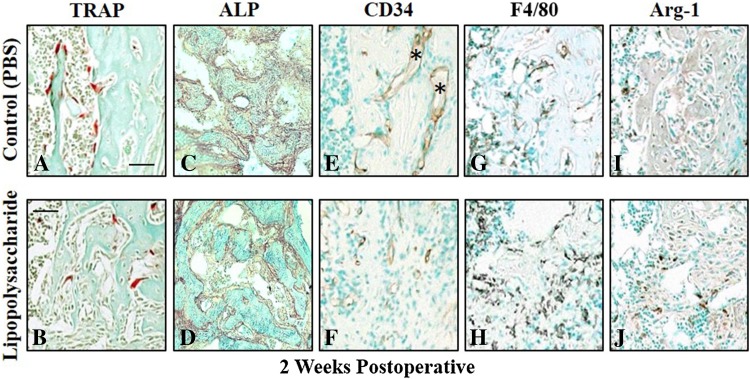Fig. 3A–J.
Mid-sagittal sections were harvested from decalcified, paraffin-embedded femurs of Control and lipopolysaccharide (LPS)-treated mice euthanized at 2 weeks postoperative and adjacent sections stained for quantitative analyses of cell composition. Tartrate resistant acid phosphatase (TRAP)-positive osteoclasts (red) adjacent to bone spicules (green) were more numerous in bones harvested from (A) Control compared with (B) LPS-treated mouse femurs. Alkaline phosphatase (ALP)-positive osteoblasts also were more numerous in (C) Control compared with (D) LPS-treated mouse femurs. (E) Newly formed blood vessels (asterisk) lined with CD34-positive vascular endothelial cells were more numerous in Control femurs than in those from (F) LPS-treated mice. The total number of F4/80-positive macrophages was lower in (G) Control bone compared with that from (H) LPS-treated mice. A similar pattern was seen with arginase-1 positive M2 macrophages, which were fewer in (I) Control femurs than in femurs from (J) LPS-treated mice. Scale bar represents 50 µm for all images.

